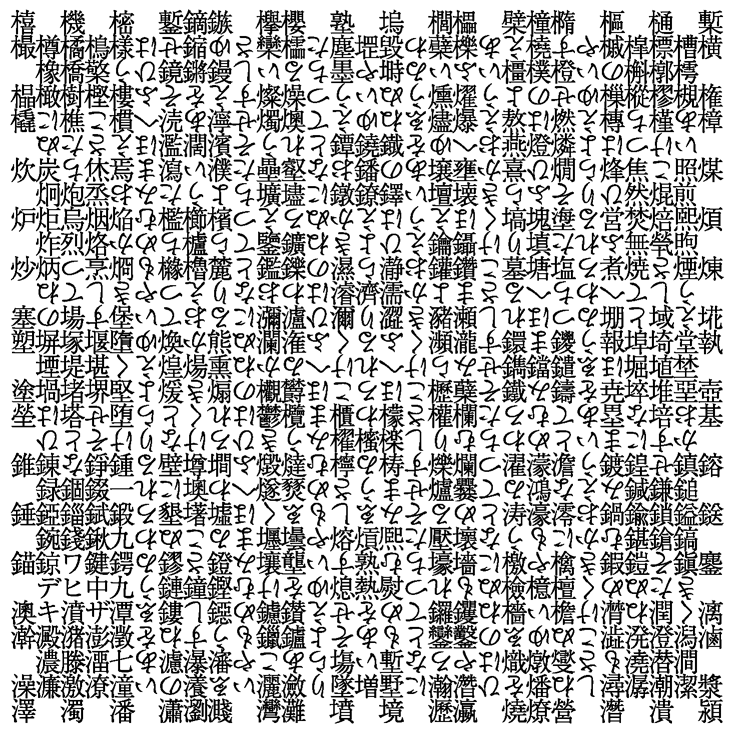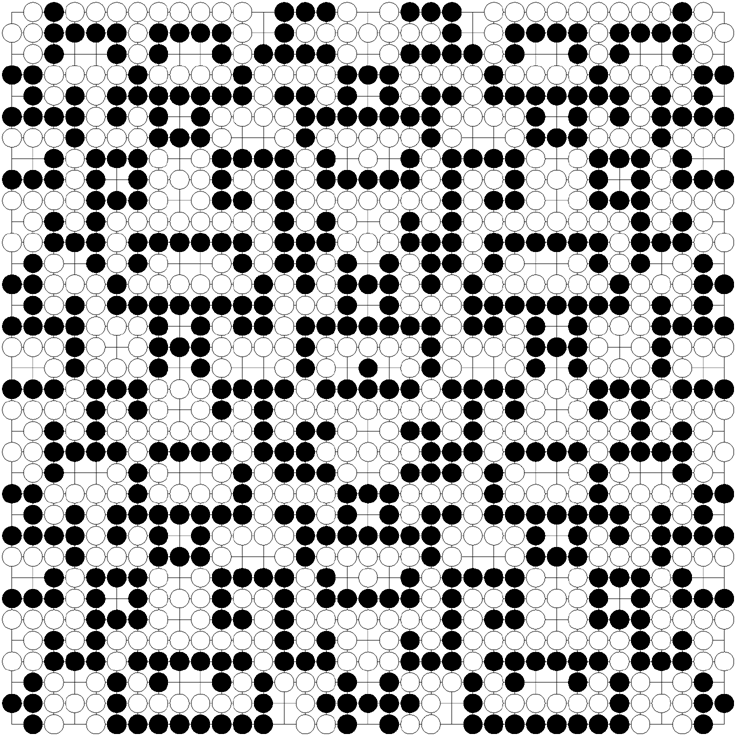to japanese

Letter-Coordinates-Type Painting No. 1 of 29 Letters by 29 Lines
by Hideki Nakazawa, 1997
This work is based on an idea to replace every dot on bitmap CG with letters. The coordinates of letters are not put at random, nor do they show anything by the visual effects like shades, nor form any sentences. I simply picked up Chinese characters with components each of which indicates one of these meanings of "tree" "fire" "earth" "gold" and "water" (which are the Chinese five elements called "gogyo") from the JIS code table and put them in order. Hiragana letters (Japanese alphabets) are inserted between Chinese characters in the Japanese alphabetical order. All letters have both visual and phonetic aspects. Since this work only deals with the visual aspect, Chinese characters, i.e., ideograms are left intact, but Hiragana letters, i.e., phonograms needed to have their phonetic aspects erased by being put upside-down. This is one of the works that I call method paintings. [This text was appeared in the IDEA magazine 294 '02-09 (featuring Black & White).]

Stone-Arrangement Painting on the Board No. 1 of 35 Points by 35 Rows
by Hideki Nakazawa, 1999
This work is based on an idea to replace every dot on bitmap CG with Go stones. The playing method of the Go game (Eastern board game) is to form lines with Go stones (i.e. dots) in order to enclose a plane with those lines. That means, the playing method of Go game itself contains the issue that the Western Art has seen as problematic: the issue of pointillism or colors, line drawing or form. The whole board of this work shows the state of "Seki" in Go terminology. That means, just another move made by you or your opponent would automatically lead to fatal ruin. It is the state between life and death, and in the view of the Western Art, it is right in-between pointillism and line drawing. In other words, it shows the moment where the visual state between color painting and form drawing is logically achieved. This is one of the works that I call method paintings. [This text was appeared in the IDEA magazine 294 '02-09 (featuring Black & White).]
cf.
'Black and White' IS color
[Appeared in the IDEA magazine 294 '02-09 (featuring Black & White)]
to japanese
--
Bulletin "Method"
Works exhibited in the bulletin

